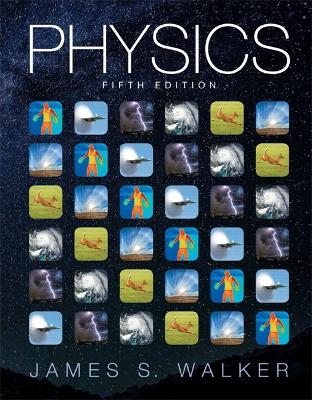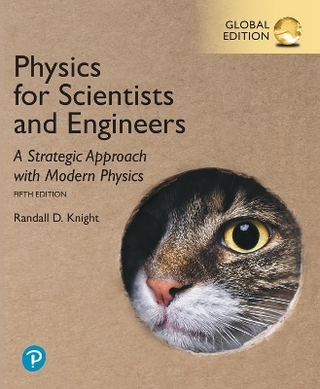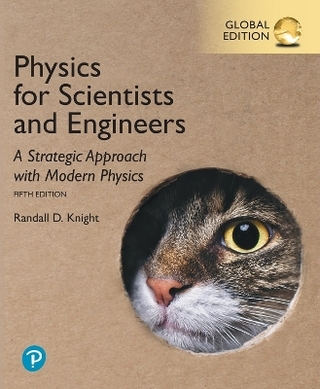
TestGen for University Physics with Modern Physics (Available via Mastering)
Pearson (Hersteller)
978-0-13-527587-0 (ISBN)
- Titel nicht im Sortiment
- Artikel merken
Roger A. Freedman is a Lecturer in Physics at the University of California, Santa Barbara. He was an undergraduate at the University of California campuses in San Diego and Los Angeles and did his doctoral research in nuclear theory at Stanford University under the direction of Professor J. Dirk Walecka. Dr. Freedman came to UCSB in 1981 after three years of teaching and doing research at the University of Washington. At UCSB, Dr. Freedman has taught in both the Department of Physics and the College of Creative Studies, a branch of the university intended for highly gifted and motivated undergraduates. He has published research in nuclear physics, elementary particle physics, and laser physics. In recent years, he has worked to make physics lectures a more interactive experience through the use of classroom response systems and pre-lecture videos. In the 1970s Dr. Freedman worked as a comic book letterer and helped organize the San Diego Comic-Con (now the world’s largest popular culture convention) during its first few years. Today, when not in the classroom or slaving over a computer, Dr. Freedman can be found either flying (he holds a commercial pilot’s license) or with his wife, Caroline, cheering on the rowers of UCSB Men’s and Women’s Crew. In Memoriam: Hugh Young (1930—2013) Hugh D. Young was Emeritus Professor of Physics at Carnegie Mellon University. He earned both his undergraduate and graduate degrees from that university. He earned his Ph.D. in fundamental particle theory under the direction of the late Richard Cutkosky. Dr. Young joined the faculty of Carnegie Mellon in 1956 and retired in 2004. He also had two visiting professorships at the University of California, Berkeley. Dr. Young’s career was centered entirely on undergraduate education. He wrote several undergraduate-level textbooks, and in 1973 he became a coauthor with Francis Sears and Mark Zemansky for their well-known introductory textbooks. In addition to his role on Sears and Zemansky’s University Physics, he was the author of Sears and Zemansky’s College Physics. Dr. Young earned a bachelor’s degree in organ performance from Carnegie Mellon in 1972 and spent several years as Associate Organist at St. Paul’s Cathedral in Pittsburgh. He often ventured into the wilderness to hike, climb, or go caving with students in Carnegie Mellon’s Explorers Club, which he founded as a graduate student and later advised. Dr. Young and his wife, Alice, hosted up to 50 students each year for Thanksgiving dinners in their home. Always gracious, Dr. Young expressed his appreciation earnestly: “I want to extend my heartfelt thanks to my colleagues at Carnegie Mellon, especially Professors Robert Kraemer, Bruce Sherwood, Ruth Chabay, Helmut Vogel, and Brian Quinn, for many stimulating discussions about physics pedagogy and for their support and encouragement during the writing of several successive editions of this book. I am equally indebted to the many generations of Carnegie Mellon students who have helped me learn what good teaching and good writing are, by showing me what works and what doesn’t. It is always a joy and a privilege to express my gratitude to my wife, Alice, and our children, Gretchen and Rebecca, for their love, support, and emotional sustenance during the writing of several successive editions of this book. May all men and women be blessed with love such as theirs.” We at Pearson appreciated his professionalism, good nature, and collaboration. He will be missed. A. Lewis Ford is Professor of Physics at Texas A&M University. He received a B.A. from Rice University in 1968 and a Ph.D. in chemical physics from the University of Texas at Austin in 1972. After a one-year postdoc at Harvard University, he joined the Texas A&M physics faculty in 1973 and has been there ever since. Professor Ford has specialized in theoretical atomic physics–in particular, atomic collisions. At Texas A&M he has taught a variety of undergraduate and graduate courses, but primarily introductory physics.
MECHANICS
1. Units, Physical Quantities, and Vectors
2. Motion Along a Straight Line
3. Motion in Two or Three Dimensions
4. Newton’s Laws of Motion
5. Applying Newton’s Laws
6. Work and Kinetic Energy
7. Potential Energy and Energy Conservation
8. Momentum, Impulse, and Collisions
9. Rotation of Rigid Bodies
10. Dynamics of Rotational Motion
11. Equilibrium and Elasticity
12. Fluid Mechanics
13. Gravitation
14. Periodic Motion
WAVES/ACOUSTICS
15. Mechanical Waves
16. Sound and Hearing
THERMODYNAMICS
17. Temperature and Heat
18. Thermal Properties of Matter
19. The First Law of Thermodynamics
20. The Second Law of Thermodynamics
ELECTROMAGNETISM
21. Electric Charge and Electric Field
22. Gauss’s Law
23. Electric Potential
24. Capacitance and Dielectrics
25. Current, Resistance, and Electromotive Force
26. Direct-Current Circuits
27. Magnetic Field and Magnetic Forces
28. Sources of Magnetic Field
29. Electromagnetic Induction
30. Inductance
31. Alternating Current
32. Electromagnetic Waves
OPTICS
33. The Nature and Propagation of Light
34. Geometric Optics
35. Interference
36. Diffraction
MODERN PHYSICS
37. Relativity
38. Photons: Light Waves Behaving as Particles
39. Particles Behaving as Waves
40. Quantum Mechanics I: Wave Functions
41. Quantum Mechanics II: Atomic Structure
42. Molecules and Condensed Matter
43. Nuclear Physics
44. Particle Physics and Cosmology
| Erscheint lt. Verlag | 4.8.2022 |
|---|---|
| Sprache | englisch |
| Themenwelt | Naturwissenschaften ► Physik / Astronomie |
| ISBN-10 | 0-13-527587-3 / 0135275873 |
| ISBN-13 | 978-0-13-527587-0 / 9780135275870 |
| Zustand | Neuware |
| Informationen gemäß Produktsicherheitsverordnung (GPSR) | |
| Haben Sie eine Frage zum Produkt? |
aus dem Bereich


